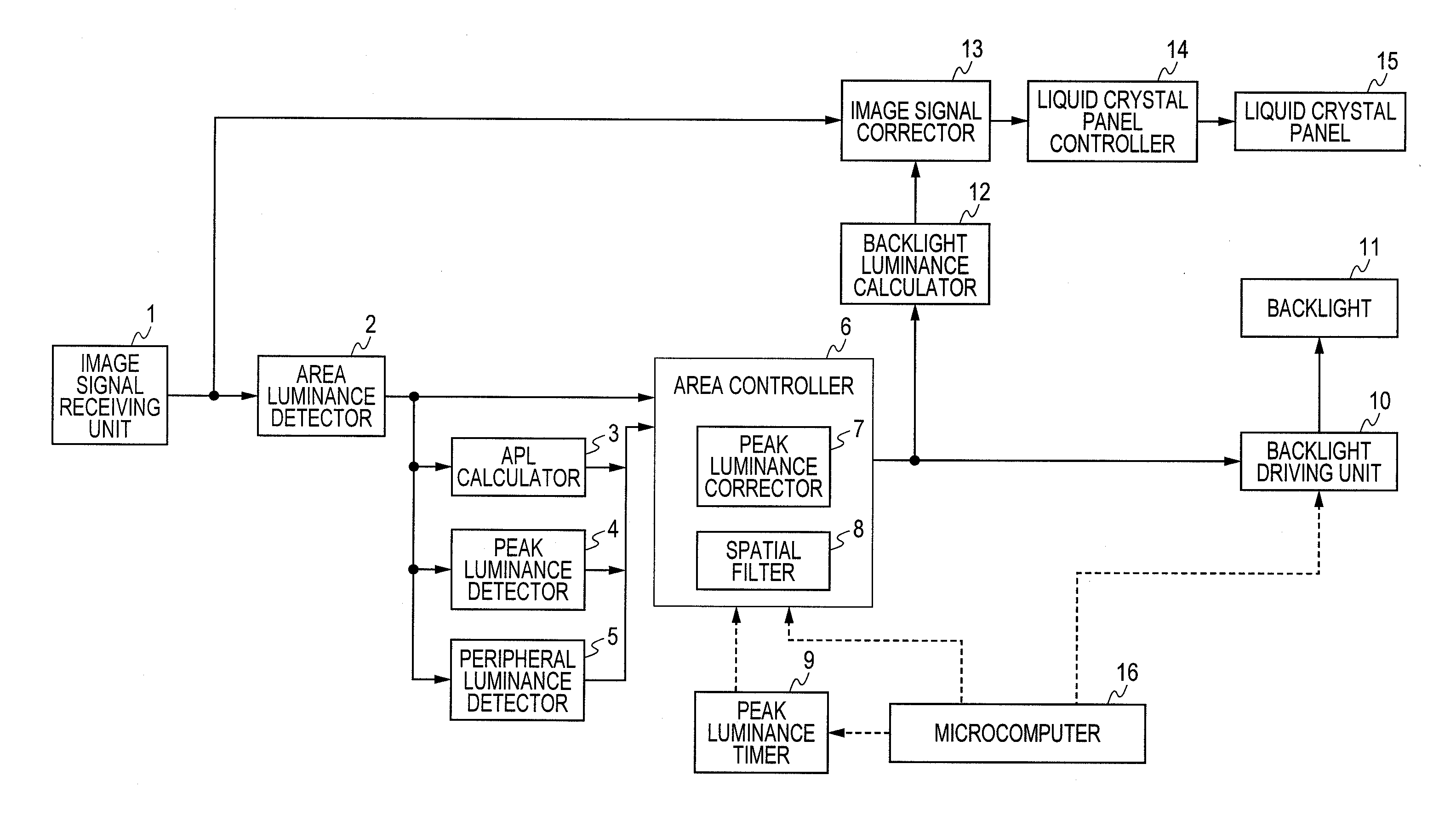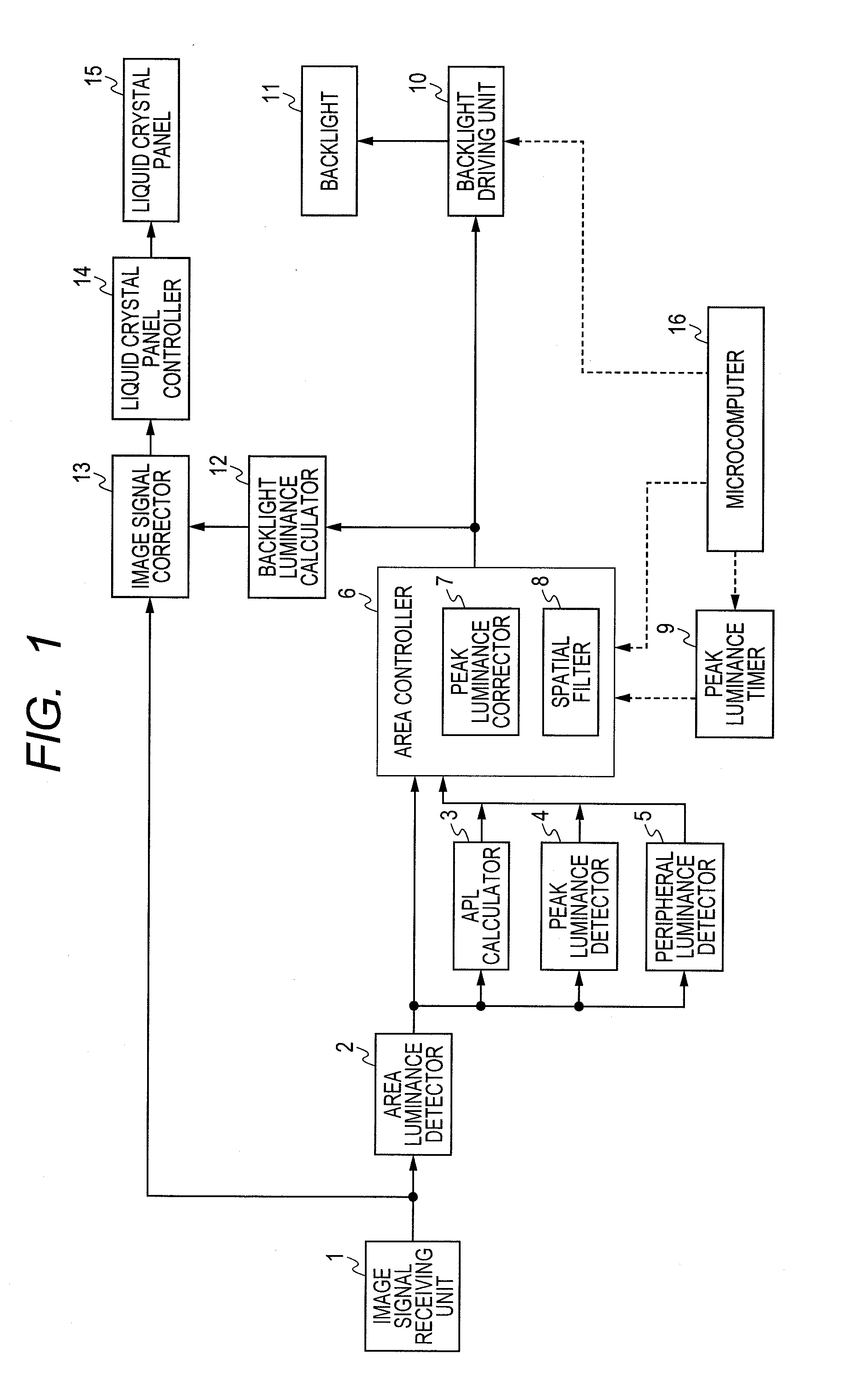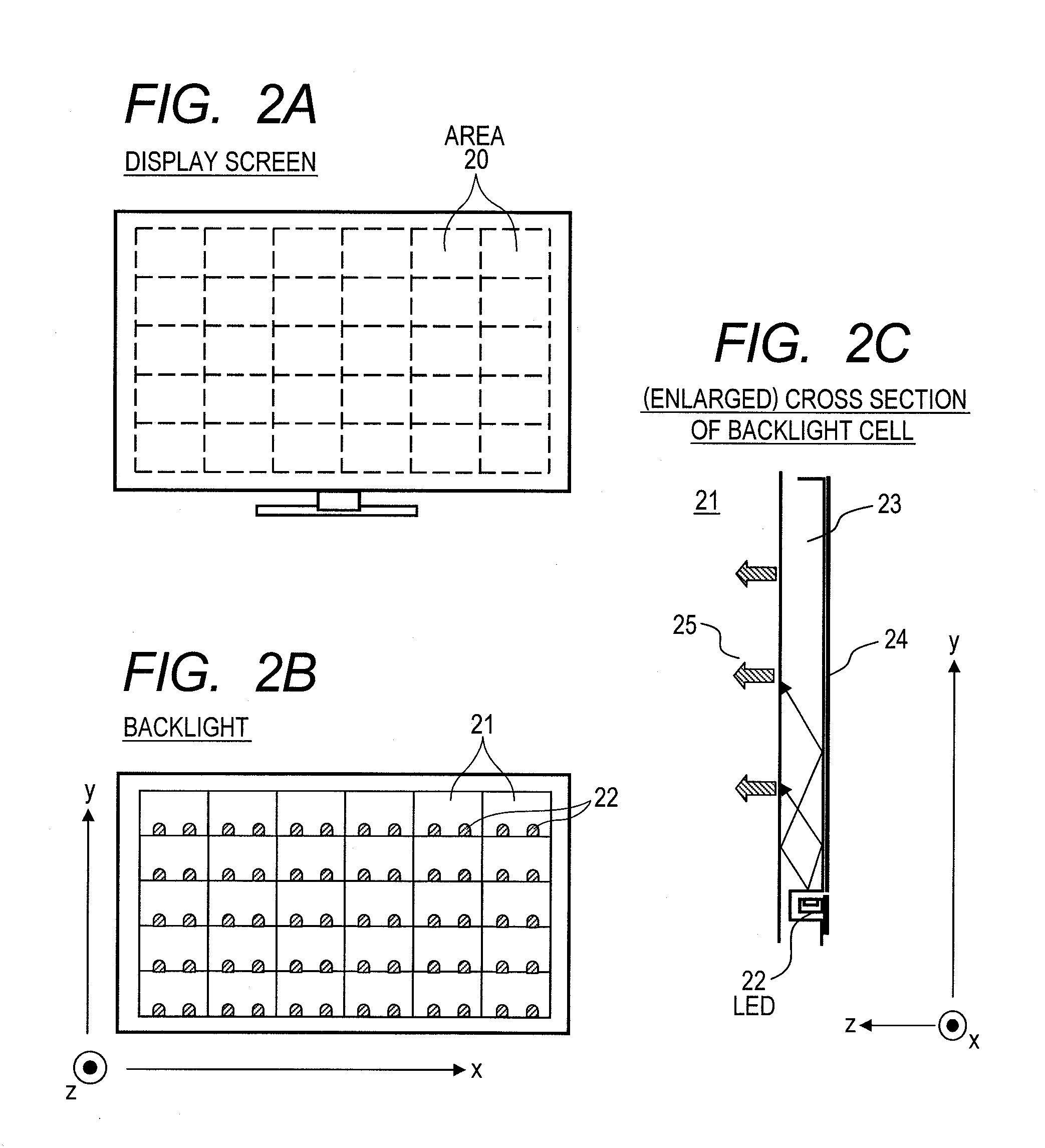Liquid crystal display device
a liquid crystal display and display device technology, applied in the field of liquid crystal display devices, can solve the problems of illumination light leakage, insufficient white peak luminance, and lesser white image sharpness, and achieve the effect of preventing luminance insufficiency
- Summary
- Abstract
- Description
- Claims
- Application Information
AI Technical Summary
Benefits of technology
Problems solved by technology
Method used
Image
Examples
first embodiment
[0033]In the first embodiment, a luminance control for a high-luminance area is described in which a high-luminance image is displayed in a low-luminance background image.
[0034]FIG. 3 is a diagram illustrating an example of the display screen on which the luminance control according to the present embodiment is performed. FIG. 3 illustrates the case in which a single high-luminance area is solely present.
[0035]The display screen is divided into 12×6 areas. A high-luminance image (white image) is displayed in a low-luminance background image (black image) on the display screen. It is assumed that the high-luminance image is present in a single area B. The area B is hereinafter called a “peak luminance area,” while areas C in which the low-luminance image is displayed and located adjacent to the area B are hereinafter called “peripheral areas.” In this example, four peripheral areas C are present. Light does not leak from the area B into areas diagonally located by the area B (or too ...
second embodiment
[0060]In the second embodiment a luminance control for a low-luminance area is described in which a low-luminance image is displayed in a high-luminance background image.
[0061]FIG. 8 is a diagram illustrating an example of the display screen on which the luminance control according to the present embodiment is performed. FIG. 8 illustrates the case in which a single low-luminance area is solely present.
[0062]The display screen is divided into 12×6 areas. The low-luminance image (black image) is displayed in the high-luminance background image (white image). It is assumed that the low-luminance image is present in a single area E. The area E is hereinafter called a “peak luminance area,” while areas F in which the high luminance image is displayed and located adjacent to the peak luminance area E are hereinafter called “peripheral areas.” In this example, four peripheral areas F are present.
[0063]According to the conventional area control, a backlight luminance level of the area E is...
PUM
| Property | Measurement | Unit |
|---|---|---|
| threshold | aaaaa | aaaaa |
| threshold | aaaaa | aaaaa |
| threshold | aaaaa | aaaaa |
Abstract
Description
Claims
Application Information
 Login to View More
Login to View More - R&D
- Intellectual Property
- Life Sciences
- Materials
- Tech Scout
- Unparalleled Data Quality
- Higher Quality Content
- 60% Fewer Hallucinations
Browse by: Latest US Patents, China's latest patents, Technical Efficacy Thesaurus, Application Domain, Technology Topic, Popular Technical Reports.
© 2025 PatSnap. All rights reserved.Legal|Privacy policy|Modern Slavery Act Transparency Statement|Sitemap|About US| Contact US: help@patsnap.com



